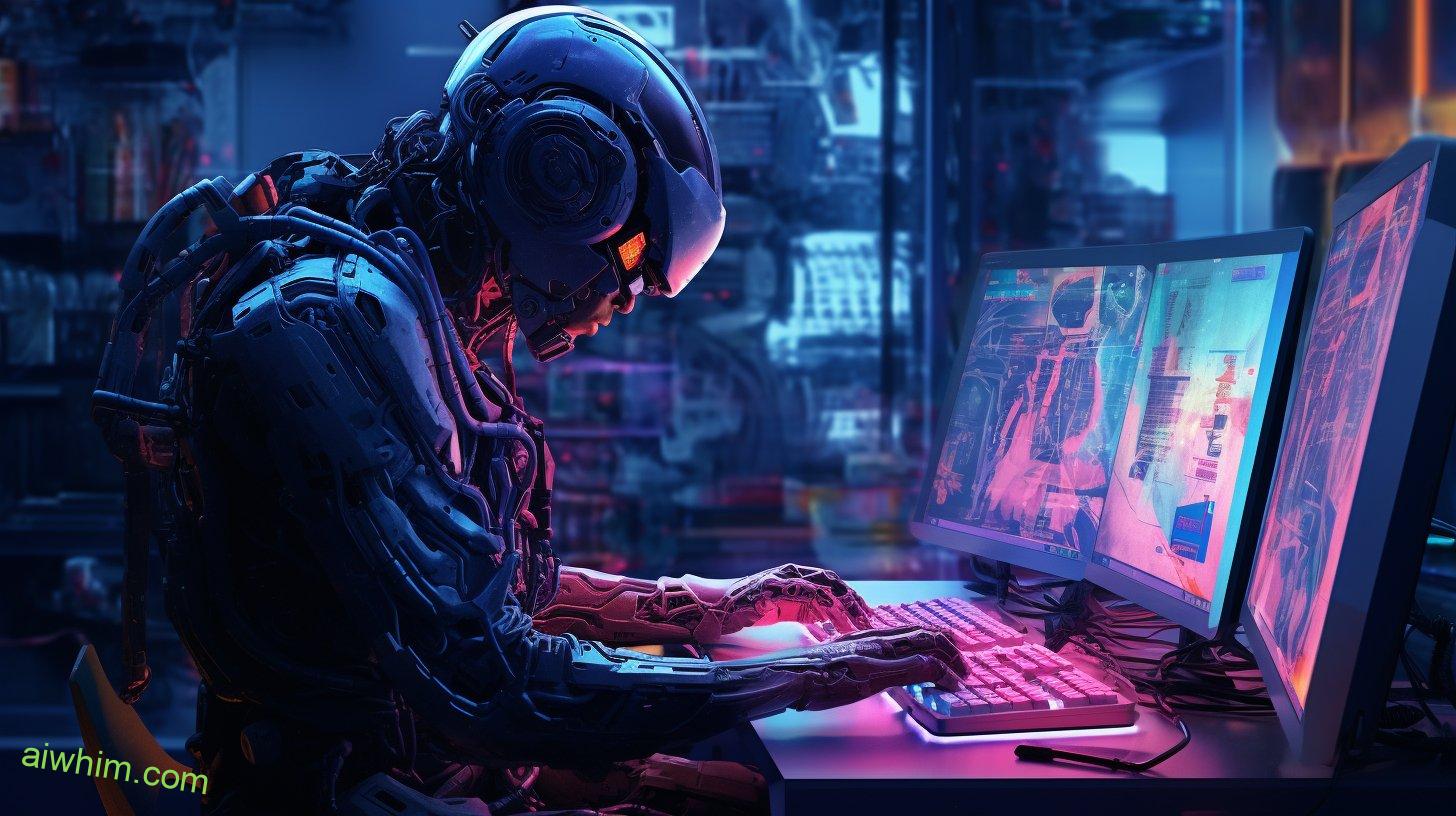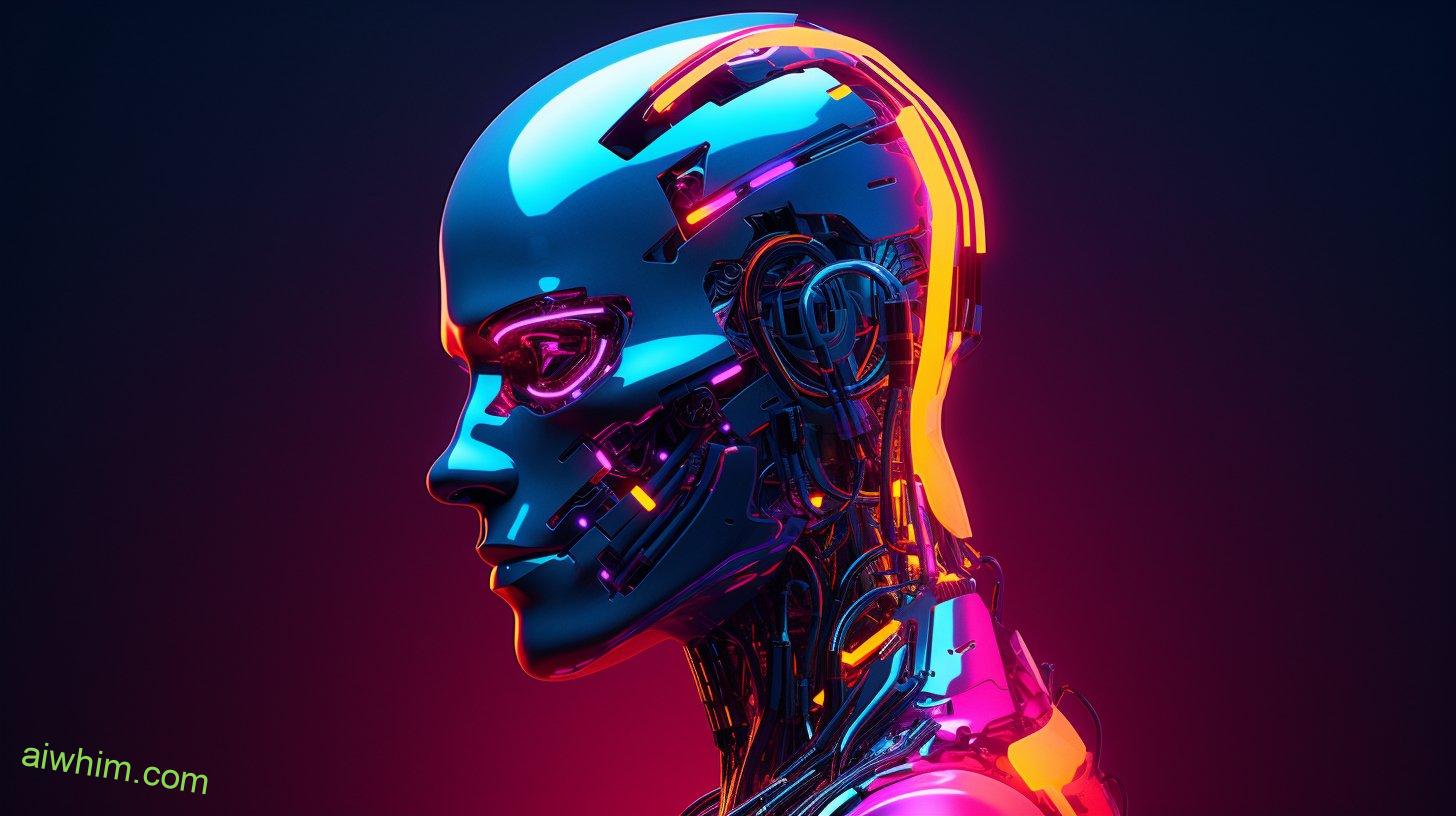Are you curious about the future of public safety telecommunicators? Will they be replaced by AI?
In this article, we explore the rise of artificial intelligence in public safety and its potential impact on emergency response. We delve into the benefits and challenges of implementing AI in telecommunications while ensuring data privacy and security.
Discover how AI can be a supportive tool for telecommunicators, working collaboratively with humans. Join us as we envision the future of public safety in an AI-driven world where freedom remains paramount.
Key Takeaways
- AI technology can revolutionize response times and accuracy in emergency dispatch, leading to increased efficiency and accuracy in handling emergency calls.
- While AI can assist in crime prevention and resource allocation, it should be seen as an opportunity for collaboration and enhanced efficiency, rather than a replacement for public safety telecommunicators.
- Implementing AI in telecommunications can lead to enhanced efficiency in processing vast amounts of data, improved customer service, and tailored services based on user behavior and preferences.
- Ethical considerations, such as ensuring transparency, addressing biases, and maintaining public trust, are crucial when relying on AI for emergency response.

The Role of Public Safety Telecommunicators
In your role as a public safety telecommunicator, you play a vital role in ensuring the safety and well-being of your community. As technology continues to advance and society evolves, so does the role of public safety telecommunicators. The evolving role encompasses a range of responsibilities that require specific training requirements to effectively respond to emergencies.
As a public safety telecommunicator, you are trained to handle emergency calls and dispatch the appropriate personnel to the scene. Your ability to remain calm under pressure and gather accurate information is crucial in providing timely assistance to those in need. In addition to answering emergency calls, you may also be responsible for monitoring alarm systems, coordinating resources during major incidents, and providing support to first responders in the field.
To carry out these tasks effectively, it is essential that you receive comprehensive training. Training requirements for public safety telecommunicators vary by jurisdiction but typically include courses on call-taking techniques, radio communication protocols, emergency medical dispatch procedures, and legal aspects of telecommunications. You must also stay updated on new technologies and software systems used in emergency communications.
The evolving role of public safety telecommunicators reflects the ever-changing needs of our communities. Advances in technology have allowed for more efficient handling of emergency calls with enhanced location accuracy and improved data sharing capabilities. As a result, there is an increasing emphasis on multitasking abilities and proficiency in using various computer-aided dispatch systems.
Your commitment to ongoing training ensures that you are equipped with the necessary skills and knowledge required for this demanding profession. By staying up-to-date with evolving technologies and continuously improving your expertise, you can confidently fulfill your duty as a public safety telecommunicator while contributing to the freedom and well-being of your community.

The Rise of Artificial Intelligence in Public Safety
As a public safety telecommunicator, you may be wondering how the rise of artificial intelligence impacts your role. With the advancements in technology, AI is increasingly being used in various aspects of public safety, including emergency dispatch and crime prevention.
In terms of emergency dispatch, AI has the potential to revolutionize response times and accuracy. AI algorithms can analyze incoming calls and quickly determine the nature and urgency of each situation. This means that as a telecommunicator, you could receive more precise information about an incident, allowing you to dispatch appropriate resources more efficiently. Additionally, AI can help identify patterns and trends in emergency calls, enabling better resource allocation and strategic planning for future emergencies.
When it comes to crime prevention, AI-powered systems can assist law enforcement agencies in identifying potential threats before they occur. By analyzing vast amounts of data from various sources such as CCTV cameras, social media platforms, and criminal databases, AI algorithms can detect suspicious activities or individuals with higher accuracy than traditional methods alone. As a result, you would have access to more comprehensive information about potential risks in your area, empowering you to make informed decisions when responding to incidents.
While there are concerns about job displacement due to AI advancements, it’s important to remember that artificial intelligence is meant to augment rather than replace human capabilities. As a public safety telecommunicator with your expertise and experience, you play a critical role in interpreting complex situations and providing empathy during high-stress situations. The rise of artificial intelligence should be seen as an opportunity for collaboration and enhanced efficiency rather than a threat to your profession.
Embracing the benefits that AI brings will ultimately enable you as a public safety telecommunicator to perform your duties even more effectively while ensuring the freedom and security of those who rely on your invaluable services every day.

Understanding AI Technology in Emergency Response
By analyzing data from various sources, AI algorithms can quickly detect potential threats and assist emergency responders. Understanding AI technology in emergency response is crucial to harnessing the power of artificial intelligence for public safety. Here are three key points to consider:
- Enhanced Emergency Call Handling: AI-assisted emergency call handling can significantly improve response times and accuracy. Through voice recognition and natural language processing, AI systems can analyze calls for critical information and automatically prioritize them based on urgency. This ensures that the most urgent cases receive immediate attention, saving valuable time in emergencies.
- Real-time Threat Detection: With its ability to process vast amounts of data in real-time, AI technology can help identify potential threats before they escalate. By monitoring social media feeds, news reports, surveillance cameras, and other sources of information, AI algorithms can quickly detect patterns or anomalies that may indicate a potential emergency situation. This early detection allows emergency responders to take proactive measures and mitigate risks effectively.
- Predictive Analysis: AI-powered predictive analysis enables agencies to anticipate emergencies by analyzing historical data and identifying trends or risk factors. By understanding patterns such as high crime areas or accident-prone locations, authorities can allocate resources more strategically and implement preventive measures. This not only helps in reducing response times but also saves lives by preventing incidents from occurring in the first place.
In conclusion, embracing AI technology in emergency response empowers public safety agencies with invaluable tools for faster and more efficient incident management. The combination of enhanced call handling capabilities, real-time threat detection, and predictive analysis equips emergency responders with the knowledge and insights needed to make informed decisions swiftly during critical situations.
As we continue to advance technologically, leveraging AI’s potential will undoubtedly play a vital role in ensuring freedom while safeguarding our communities.

Benefits and Challenges of Implementing AI in Telecommunications
Implementing AI in telecommunications brings both benefits and challenges. For individuals who value freedom, the introduction of AI in this field can offer numerous advantages. One of the key benefits is enhanced efficiency. AI-powered systems have the ability to process vast amounts of data quickly and accurately, allowing telecommunication networks to operate more smoothly and effectively.
Moreover, AI can improve customer service by providing personalized experiences. By analyzing user behavior and preferences, AI algorithms can tailor services and recommendations to individual needs, creating a more satisfying user experience. This level of customization not only saves time but also ensures that customers receive exactly what they desire.
However, it is important to acknowledge the challenges that come with implementing AI in telecommunications. One major concern is privacy. As AI systems collect and analyze large volumes of personal data, there is a risk that this information could be misused or compromised. Safeguarding privacy becomes crucial when implementing such technology.
Additionally, another challenge lies in ensuring the ethical use of AI in telecommunications. It is essential to establish regulations and guidelines that prevent discrimination or bias in decision-making processes carried out by these systems. Striking a balance between technological advancements and maintaining human values is imperative for a society that cherishes freedom.

AI-Assisted Emergency Call Handling: A Game Changer
You can expect a significant transformation in emergency call handling with the introduction of AI assistance. This game-changing technology is revolutionizing emergency response and bringing about a new era of efficiency and effectiveness. Here are three reasons why AI-assisted emergency call handling is such a game changer:
- Improved accuracy: AI algorithms have the ability to analyze vast amounts of data in real-time, allowing them to quickly determine the nature and severity of an emergency. This means that when you make a call for help, the AI system can assess the situation accurately and dispatch the appropriate resources without any delay.
- Faster response times: With AI assisting in emergency call handling, response times can be significantly reduced. The technology can automatically prioritize calls based on urgency, ensuring that critical situations receive immediate attention. By streamlining the process and eliminating human error or delays, help can reach those in need faster than ever before.
- Enhanced situational awareness: AI systems have advanced capabilities to gather information from various sources simultaneously. Whether it’s analyzing caller location data or accessing relevant databases, these systems provide telecommunicators with valuable insights that aid decision-making during emergencies. With this enhanced situational awareness, responders can handle emergencies more effectively and make informed decisions to protect lives.
The introduction of AI assistance in emergency call handling is truly revolutionary. It brings about improved accuracy, faster response times, and enhanced situational awareness – all contributing to more efficient and effective emergency responses. With this game-changing technology at their disposal, public safety telecommunicators will be empowered to save lives with greater speed and precision than ever before.

Human Vs. AI: Examining the Pros and Cons
When comparing human and AI assistance in emergency call handling, there are pros and cons to consider.
On one hand, AI in emergency response has the potential to greatly improve telecommunications. With AI-driven decision making, response times could be faster, as algorithms can quickly analyze data and provide accurate recommendations. Additionally, AI systems can handle a large volume of calls simultaneously, reducing wait times for callers in distress. This efficiency could potentially save lives.
However, there are also drawbacks to relying solely on AI in emergency situations. One major concern is the lack of human empathy and intuition that AI lacks. Emergency calls often involve highly emotional situations where human connection and understanding are crucial. Without a human touch, callers may feel unheard or misunderstood by an emotionless machine.
Another issue is the risk of errors or glitches in AI technology. While advanced algorithms can analyze vast amounts of data, they may not always make the right decisions or accurately interpret complex situations. In life-or-death scenarios, any mistake can have severe consequences.
Furthermore, there are ethical considerations when it comes to using AI for decision making in emergencies. Who would be held accountable if something goes wrong? Would people trust machines with their lives?

The Impact of AI on Response Times and Public Safety
The impact of AI on emergency response times cannot be underestimated, as it has the potential to greatly improve efficiency and save lives. With advancements in technology, AI is becoming an integral part of emergency dispatch systems, revolutionizing the way emergencies are handled. Here’s why you should be excited about the effectiveness of AI in emergency response:
- Faster Response Times: AI algorithms can analyze vast amounts of data from various sources such as 911 calls, GPS locations, and historical incident data. This enables them to quickly identify patterns and make accurate predictions about emergency situations. As a result, emergency responders can be dispatched promptly, reducing response times significantly.
- Enhanced Decision-making: Public safety telecommunicators often face high-pressure situations where they need to make split-second decisions. AI-powered systems can assist in this process by providing real-time information and recommendations based on previous incidents and best practices. This helps telecommunicators make more informed decisions that lead to better outcomes.
- Improved Resource Allocation: When emergencies occur, it’s crucial to allocate resources effectively. AI technologies can analyze data in real-time to determine the optimal deployment of ambulances, fire trucks, and police officers based on factors like proximity and severity of incidents. By optimizing resource allocation, emergency services can respond more efficiently and provide timely assistance where it is needed most.

Training and Skills Required for AI-Enhanced Telecommunicators
AI-enhanced telecommunicators are essential in emergency response, requiring specialized training and a strong understanding of AI technologies. As technology advances, it is crucial for telecommunicators to adapt their skillset and embrace the opportunities that AI brings.
To become an effective AI-enhanced telecommunicator, you need to undergo specific training programs designed to equip you with the necessary knowledge and skills. These programs focus on teaching you how to effectively utilize AI technologies in emergency situations. You will learn about the various algorithms used by AI systems and how they can aid in decision-making processes. Additionally, you will gain insights into data analysis techniques, which will help you interpret information received from different sources.
One important aspect of being an AI-enhanced telecommunicator is your ability to adapt your skillset to new technologies and changing circumstances. With the rapid advancements in AI, it is crucial for telecommunicators to stay up-to-date with the latest developments and continuously enhance their abilities. This includes being proficient in using AI-based software applications specifically designed for emergency response purposes.
Moreover, as an AI-enhanced telecommunicator, you should be open to adopting new approaches and methodologies that emerge as technology evolves. Flexibility in adapting your skillset enables you to effectively integrate AI technologies into your workflow and provide better assistance during emergencies.

Ethical Considerations in AI-Driven Emergency Services
Ethical considerations arise when integrating AI-driven technologies into emergency services. As advancements in artificial intelligence continue to shape the way we respond to emergencies, it is crucial to examine the ethical implications and potential biases in AI algorithms. Here are three important points to consider:
- Transparency and Accountability: One of the key ethical concerns with AI-driven emergency services is ensuring transparency and accountability in the decision-making process. It is essential that both the public and emergency response agencies have a clear understanding of how AI algorithms operate and make decisions. Additionally, mechanisms should be in place to hold responsible parties accountable for any errors or biases that may occur.
- Bias in AI Algorithms: Bias can inadvertently find its way into AI algorithms, leading to unfair treatment or discrimination. When implementing AI-driven technologies in emergency services, it is crucial to address bias issues proactively by regularly auditing and retraining these systems. Diverse datasets should be used to train algorithms, ensuring they do not disproportionately favor certain demographics or perpetuate existing biases.
- Human Oversight: While AI can enhance emergency response capabilities, it should never replace human judgment entirely. Human oversight plays a vital role in mitigating potential biases and making complex judgment calls during critical situations. Emergency service providers must strike a balance between leveraging technology’s advantages while preserving human involvement for ethical decision-making.
Considering these ethical implications surrounding bias in AI algorithms when integrating them into emergency services is essential for a society that values freedom and fairness. By addressing transparency, accountability, bias mitigation efforts, and maintaining human oversight within these systems, we can ensure that technology enhances our ability to respond effectively while upholding ethical standards that reflect our shared values.

Public Perception and Trust in AI-Enabled Telecommunications
You might wonder how AI-enabled telecommunications can influence your public perception and trust. As someone who desires freedom, you value transparency and reliability in all aspects of communication.
AI has the potential to greatly impact the way telecommunications operate, but it also raises concerns about privacy and security.
When it comes to public perception, AI-enabled telecommunications can either enhance or undermine trust depending on how they are implemented. If AI is used to improve call center efficiency and response times, people may perceive it as a positive advancement that enhances their safety and well-being. However, if there are instances of AI making errors or misinterpreting information, public trust may be eroded.
Trust in AI-enabled telecommunications is vital for its widespread adoption. People need to feel confident that their personal data will be protected and that the technology will work reliably when they need assistance. Transparency regarding how AI algorithms are developed and deployed is crucial to building this trust. Openly addressing any ethical concerns associated with AI in telecommunications will also help alleviate fears.
To ensure public perception remains positive, organizations implementing AI-enabled telecommunications must prioritize user feedback and continuously improve the technology based on those insights. Additionally, establishing clear guidelines for responsible use of AI in emergency services can reassure the public that their best interests are being considered.

Exploring the Limitations and Boundaries of AI in Public Safety
Exploring the limitations and boundaries of AI in public safety helps us understand how technology can be effectively utilized to enhance emergency response efforts. Artificial Intelligence (AI) has undoubtedly revolutionized various industries, including public safety. However, it is crucial to recognize that AI also has its limitations and boundaries when it comes to ensuring public safety. Understanding these limitations is essential for making informed decisions about the integration of AI into emergency response systems.
Here are three key points to consider when exploring the limitations and boundaries of AI in public safety:
- Data Accuracy: While AI systems can process vast amounts of data quickly, their accuracy heavily relies on the quality and reliability of the input data. If inaccurate or incomplete information is fed into an AI system, it could lead to flawed decision-making processes, potentially compromising public safety.
- Ethical Considerations: Implementing AI in public safety raises ethical concerns regarding privacy, surveillance, and bias. It is crucial to establish clear guidelines and regulations to address these issues proactively. Additionally, human oversight should always be present to ensure accountability and prevent any misuse or unethical behavior associated with AI technologies.
- Human Interaction: Although AI can assist in analyzing data and providing insights, human interaction remains vital in critical situations. Public safety professionals possess valuable intuition, empathy, and decision-making abilities that cannot be replaced by machines alone. Collaborative efforts between humans and AI can optimize emergency response efforts while preserving human judgment.

Ensuring Data Privacy and Security in AI-Driven Telecommunications
Ensuring data privacy and security is crucial in the implementation of AI-driven telecommunications. As a freedom-loving individual, you value your personal information and want it to be protected at all times. With the increasing use of artificial intelligence (AI) in telecommunications, there are valid concerns regarding the privacy and security of your data.
In this age of technology, where connectivity is paramount, your personal information is more vulnerable than ever. Data privacy has become a pressing issue as AI algorithms process vast amounts of data to provide personalized services. While AI-powered telecommunications offer convenience and efficiency, they also pose significant risks if not properly secured.
Security concerns arise from potential breaches that could expose sensitive information such as call records, location data, or even conversations. This can lead to identity theft, invasion of privacy, or misuse by malicious actors. To prevent such scenarios, robust security measures must be implemented throughout the entire infrastructure supporting AI-driven telecommunications.
Encryption plays a vital role in safeguarding your data during transmission and storage. By encrypting your communications and stored information using advanced encryption algorithms, unauthorized access becomes extremely difficult for anyone trying to intercept or compromise it.
Additionally, strict access controls should be put in place to limit who can view or modify sensitive information within the system. Regular audits and monitoring help identify any potential vulnerabilities or breaches promptly so that appropriate actions can be taken.
As a freedom-conscious individual concerned about data privacy and security in AI-driven telecommunications, you must advocate for strong safeguards to protect your personal information from unauthorized access or misuse. By ensuring robust encryption methods and implementing stringent access controls along with regular audits, you can enjoy the benefits of AI while maintaining control over your own data.

AI as a Supportive Tool for Public Safety Telecommunicators
As a supportive tool, AI enhances the efficiency and effectiveness of telecommunicators in ensuring public safety. With the rapid advancements in technology, AI has become an invaluable asset to public safety telecommunicators, enabling them to handle emergency calls more efficiently and accurately.
Here are three ways in which AI serves as a supportive tool for these vital professionals:
- Automated Call Routing: AI algorithms can analyze incoming emergency calls and automatically route them to the nearest available telecommunicator. This feature helps minimize response times and ensures that emergencies are addressed promptly.
- Speech Recognition: AI-powered speech recognition technology allows telecommunicators to transcribe and analyze conversations in real-time. This capability helps eliminate human errors or misunderstandings during high-stress situations, ensuring accurate information gathering and effective communication with responders.
- Data Analysis: The implementation of AI systems enables telecommunicators to quickly access relevant data from various sources, such as caller history or incident databases. By analyzing this information, they can make informed decisions and provide better assistance during emergencies.
Implementing AI as a supportive tool does come with its fair share of challenges. Some key implementation challenges include:
- Data Privacy Concerns: As AI relies on vast amounts of data for training and analysis, maintaining strict protocols for data privacy becomes crucial. Telecommunicators must ensure that personal information is protected throughout the process.
- Training and Familiarization: Implementing new technologies requires proper training for telecommunicators to effectively utilize AI tools. Overcoming resistance to change and providing comprehensive training programs are essential steps towards successful implementation.
- Technical Integration: Integrating AI systems into existing infrastructure can be complex due to compatibility issues or system limitations. Ensuring seamless integration while minimizing disruption is vital for a smooth transition.
Despite these challenges, embracing AI as a supportive tool empowers public safety telecommunicators by enhancing their capabilities, improving response times, and ultimately saving lives.

Collaborative Approach: Humans and AI Working Together
You can maximize the benefits of AI by adopting a collaborative approach that encourages humans and AI to work together seamlessly. Embracing human-AI collaboration opens up a world of possibilities, allowing us to tap into the unique strengths of both humans and AI systems. By working side by side, we can overcome challenges and achieve outcomes that neither humans nor AI could accomplish alone.
The benefits of human-AI collaboration are manifold. One major advantage is the ability to leverage the speed and efficiency of AI algorithms while also benefiting from human intuition and creativity. Together, humans and AI can analyze vast amounts of data in real-time, making better-informed decisions more quickly than ever before. This collaborative approach also enhances problem-solving capabilities as humans bring contextual understanding and critical thinking skills to complement the analytical prowess of AI.
However, it’s important to acknowledge that there are challenges associated with human-AI collaboration. Trust is a key issue: building trust between humans and AI systems requires transparency, explainability, and accountability. Ensuring clear communication channels between humans and AI is crucial for effective collaboration. Additionally, training individuals on how to effectively interact with AI systems will be essential for successful integration.
Despite these challenges, embracing a collaborative approach between humans and AI holds immense potential for innovation across various domains such as healthcare, transportation, finance, and more. By harnessing the power of both human intelligence and artificial intelligence, we can create solutions that are faster, smarter, and more accurate while still preserving our freedom to make choices based on our values.

The Future of Public Safety Telecommunicators in an AI-Driven World
In an AI-driven world, you can enhance your role as a public safety telecommunicator by adapting to new technologies and leveraging the capabilities of AI systems. Embracing these changes will not only improve your effectiveness but also open up exciting future job prospects.
Here are three ways you can thrive in this evolving landscape:
- Embrace AI Assistance: Rather than being replaced by AI, think of it as a valuable tool that can augment your skills and enable faster response times. By learning how to effectively collaborate with AI systems, you can provide more accurate information to emergency responders and ensure better outcomes for those in need.
- Develop Specialized Expertise: As technology advances, there will be an increasing demand for individuals who possess specialized knowledge in managing and overseeing AI systems within the realm of public safety communications. By investing time in understanding the intricacies of these systems, you can position yourself as a sought-after expert in the field.
- Address Ethical Dilemmas: While AI brings many benefits, it also raises ethical concerns that need careful consideration. As a public safety telecommunicator, it is important to actively engage in discussions around responsible use of AI and advocate for ethical guidelines. By championing transparency, accountability, and fairness in the integration of AI technologies, you can help shape a future where both freedom and safety are upheld.

Frequently Asked Questions
How Will the Implementation of AI in Telecommunications Affect Job Security for Public Safety Telecommunicators?
The implementation of AI in telecommunications may lead to job displacement for public safety telecommunicators due to technological advancements. However, it is important to consider the potential freedom and opportunities that AI can bring as well.
What Are the Potential Ethical Concerns Surrounding the Use of AI Technology in Emergency Response?
You might wonder about the ethical concerns surrounding AI in emergency response. And hey, what about job security? These are valid questions that should be discussed and considered. Let’s dive into it!
How Will Public Perception and Trust in AI-Enabled Telecommunications Be Influenced by the Introduction of AI Technology?
Public perception and trust in AI-enabled telecommunications will be influenced by the introduction of AI technology. It’s important to understand how people feel about relying on machines for emergency response, as it may impact their confidence in the system.
What Limitations and Boundaries Exist for AI in Public Safety, and How Will These Impact the Role of Telecommunicators?
You might wonder about the limitations and impact of AI in public safety. Consider this: AI can assist telecommunicators, but it cannot replace their crucial role in ensuring public safety and maintaining trust.
What Measures Will Be Taken to Ensure Data Privacy and Security in AI-Driven Telecommunications?
To ensure data privacy and security in AI-driven telecommunications, measures will be taken. Your freedom is important, so strict protocols and encryption safeguards will be implemented to protect your personal information from unauthorized access or misuse.

Conclusion
In conclusion, as public safety telecommunicators step into an AI-driven world, they won’t be replaced by artificial intelligence. Instead, AI will serve as a supportive tool, enhancing their capabilities and efficiency.
Just like the harmonious collaboration of a symphony orchestra, humans and AI will work together to create a powerful force in emergency response.
With this partnership, the future of public safety telecommunications holds immense potential and promises to keep our communities safe like a shining beacon in the dark.







